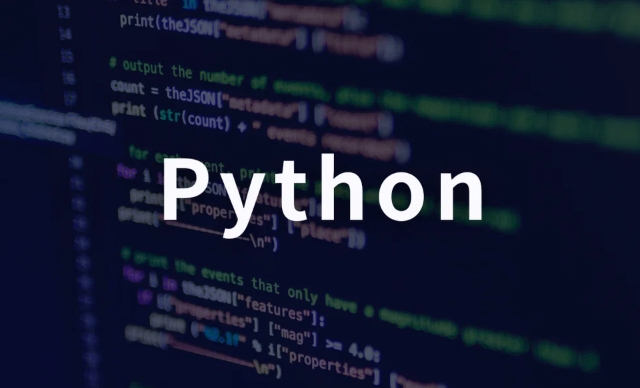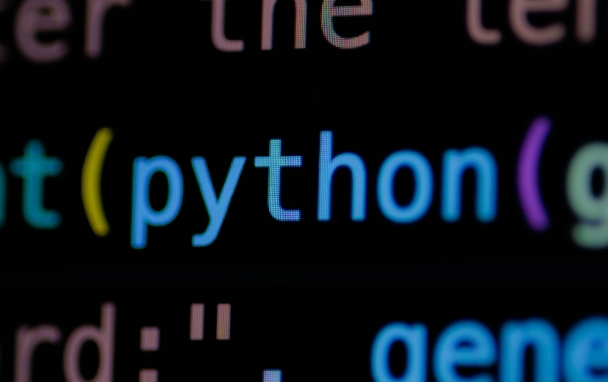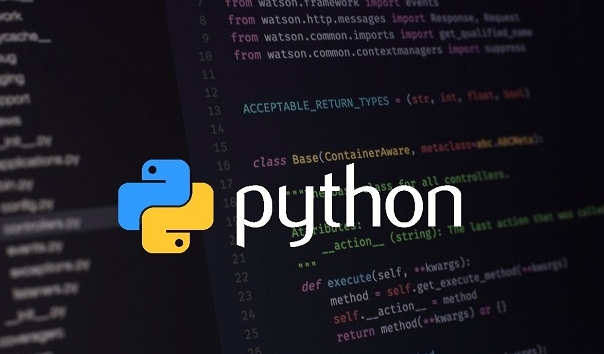Python connection to databases can be implemented through SQLAlchemy or directly using database drivers. If you need to maintain complex queries or cross-database compatibility, it is recommended to use SQLAlchemy. Its ORM module supports object mapping and Core module provides structured queries. After installation, it is established through create_engine() and operates data with session; for small scripts or one-time tasks, you can choose to directly connect drivers such as sqlite3, psycopg2, etc., and the code is concise and efficient. In any case, the credential security should be properly managed to avoid hard-coded passwords. It is recommended to use environment variables, configuration files or key management tools, and ensure that the connection is closed in time after use to prevent resource leakage.

Connecting to databases using Python is a common task for applications ranging from data analysis to web development. Whether you use SQLAlchemy or connect directly via a database driver, the key is knowing what you need and choosing the right approach.

Why You Might Use SQLAlchemy
SQLAlchemy offers an abstraction layer over raw SQL, making it easier to work with databases in an object-oriented way. It supports multiple backends (like PostgreSQL, MySQL, SQLite) and helps avoid writing database-specific code.

- If your project involves complex queries or needs to switch between databases later, SQLAlchemy can save time.
- Its ORM (Object Relational Mapper) lets you map Python classes to database tables without writing much SQL.
- Even if you don't want full ORM features, SQLAlchemy's Core module gives structured query building while still allowing raw SQL when needed.
To get started:
- Install with
pip install sqlalchemy - Use
create_engine()to connect - Reflect tables or define models
- Query using session objects or execute raw SQL
This approach works well for apps that value maintenance and flexibility.

When Going Direct Makes Sense
Sometimes, using a direct connection with a database driver is simpler and faster. This is especially true for small scripts or one-off tasks where setting up ORM layers feels like overkill.
For example:
- Connecting to PostgreSQL with
psycopg2 - Using
sqlite3for local SQLite files - Accessing MySQL through
mysql-connector-pythonorpymysql
These methods are straightforward. Here's a quick example:
import sqlite3
conn = sqlite3.connect('example.db')
cursor = conn.cursor()
cursor.execute("SELECT * FROM users")
rows = cursor.fetchall()This style is good for quick access, especially when performance matters or the logic is simple.
Handling Credentials and Security
Regardless of your method, managing credentials securely is cruel. Hardcoding passwords in scripts is risky — especially if you share or commit them accidentally.
Some safe practices:
- Store credentials in environment variables
- Use config files outside your source directory
- Rotate credentials regularly
- Avoid printing or logging sensitive values
If you're working in a team or deploying to cloud environments, tools like AWS Secrets Manager or HashiCorp Vault can help manage access dynamically.
Also, always close connections after use. Leaving open connections can lead to resource exhaustion, especially in long-running processes or web apps.
Final Thoughts
Which method you choose depends on your project size, complexity, and how much abstraction you need. SQLAlchemy is powerful and flexible but may be more than you need for small tasks. Direct connections are fast and simple but lack some of the structure and safety features of ORM tools.
At the end of the day, both approaches get the job done — it's just about matching the tool to the task.
The above is the detailed content of Connecting to Databases with Python (SQLAlchemy or direct). For more information, please follow other related articles on the PHP Chinese website!

Hot AI Tools

Undress AI Tool
Undress images for free

Undresser.AI Undress
AI-powered app for creating realistic nude photos

AI Clothes Remover
Online AI tool for removing clothes from photos.

Clothoff.io
AI clothes remover

Video Face Swap
Swap faces in any video effortlessly with our completely free AI face swap tool!

Hot Article

Hot Tools

Notepad++7.3.1
Easy-to-use and free code editor

SublimeText3 Chinese version
Chinese version, very easy to use

Zend Studio 13.0.1
Powerful PHP integrated development environment

Dreamweaver CS6
Visual web development tools

SublimeText3 Mac version
God-level code editing software (SublimeText3)
 How to handle API authentication in Python
Jul 13, 2025 am 02:22 AM
How to handle API authentication in Python
Jul 13, 2025 am 02:22 AM
The key to dealing with API authentication is to understand and use the authentication method correctly. 1. APIKey is the simplest authentication method, usually placed in the request header or URL parameters; 2. BasicAuth uses username and password for Base64 encoding transmission, which is suitable for internal systems; 3. OAuth2 needs to obtain the token first through client_id and client_secret, and then bring the BearerToken in the request header; 4. In order to deal with the token expiration, the token management class can be encapsulated and automatically refreshed the token; in short, selecting the appropriate method according to the document and safely storing the key information is the key.
 Explain Python assertions.
Jul 07, 2025 am 12:14 AM
Explain Python assertions.
Jul 07, 2025 am 12:14 AM
Assert is an assertion tool used in Python for debugging, and throws an AssertionError when the condition is not met. Its syntax is assert condition plus optional error information, which is suitable for internal logic verification such as parameter checking, status confirmation, etc., but cannot be used for security or user input checking, and should be used in conjunction with clear prompt information. It is only available for auxiliary debugging in the development stage rather than substituting exception handling.
 What are python iterators?
Jul 08, 2025 am 02:56 AM
What are python iterators?
Jul 08, 2025 am 02:56 AM
InPython,iteratorsareobjectsthatallowloopingthroughcollectionsbyimplementing__iter__()and__next__().1)Iteratorsworkviatheiteratorprotocol,using__iter__()toreturntheiteratorand__next__()toretrievethenextitemuntilStopIterationisraised.2)Aniterable(like
 What are Python type hints?
Jul 07, 2025 am 02:55 AM
What are Python type hints?
Jul 07, 2025 am 02:55 AM
TypehintsinPythonsolvetheproblemofambiguityandpotentialbugsindynamicallytypedcodebyallowingdeveloperstospecifyexpectedtypes.Theyenhancereadability,enableearlybugdetection,andimprovetoolingsupport.Typehintsareaddedusingacolon(:)forvariablesandparamete
 How to iterate over two lists at once Python
Jul 09, 2025 am 01:13 AM
How to iterate over two lists at once Python
Jul 09, 2025 am 01:13 AM
A common method to traverse two lists simultaneously in Python is to use the zip() function, which will pair multiple lists in order and be the shortest; if the list length is inconsistent, you can use itertools.zip_longest() to be the longest and fill in the missing values; combined with enumerate(), you can get the index at the same time. 1.zip() is concise and practical, suitable for paired data iteration; 2.zip_longest() can fill in the default value when dealing with inconsistent lengths; 3.enumerate(zip()) can obtain indexes during traversal, meeting the needs of a variety of complex scenarios.
 Python FastAPI tutorial
Jul 12, 2025 am 02:42 AM
Python FastAPI tutorial
Jul 12, 2025 am 02:42 AM
To create modern and efficient APIs using Python, FastAPI is recommended; it is based on standard Python type prompts and can automatically generate documents, with excellent performance. After installing FastAPI and ASGI server uvicorn, you can write interface code. By defining routes, writing processing functions, and returning data, APIs can be quickly built. FastAPI supports a variety of HTTP methods and provides automatically generated SwaggerUI and ReDoc documentation systems. URL parameters can be captured through path definition, while query parameters can be implemented by setting default values ??for function parameters. The rational use of Pydantic models can help improve development efficiency and accuracy.
 How to test an API with Python
Jul 12, 2025 am 02:47 AM
How to test an API with Python
Jul 12, 2025 am 02:47 AM
To test the API, you need to use Python's Requests library. The steps are to install the library, send requests, verify responses, set timeouts and retry. First, install the library through pipinstallrequests; then use requests.get() or requests.post() and other methods to send GET or POST requests; then check response.status_code and response.json() to ensure that the return result is in compliance with expectations; finally, add timeout parameters to set the timeout time, and combine the retrying library to achieve automatic retry to enhance stability.
 Setting Up and Using Python Virtual Environments
Jul 06, 2025 am 02:56 AM
Setting Up and Using Python Virtual Environments
Jul 06, 2025 am 02:56 AM
A virtual environment can isolate the dependencies of different projects. Created using Python's own venv module, the command is python-mvenvenv; activation method: Windows uses env\Scripts\activate, macOS/Linux uses sourceenv/bin/activate; installation package uses pipinstall, use pipfreeze>requirements.txt to generate requirements files, and use pipinstall-rrequirements.txt to restore the environment; precautions include not submitting to Git, reactivate each time the new terminal is opened, and automatic identification and switching can be used by IDE.






